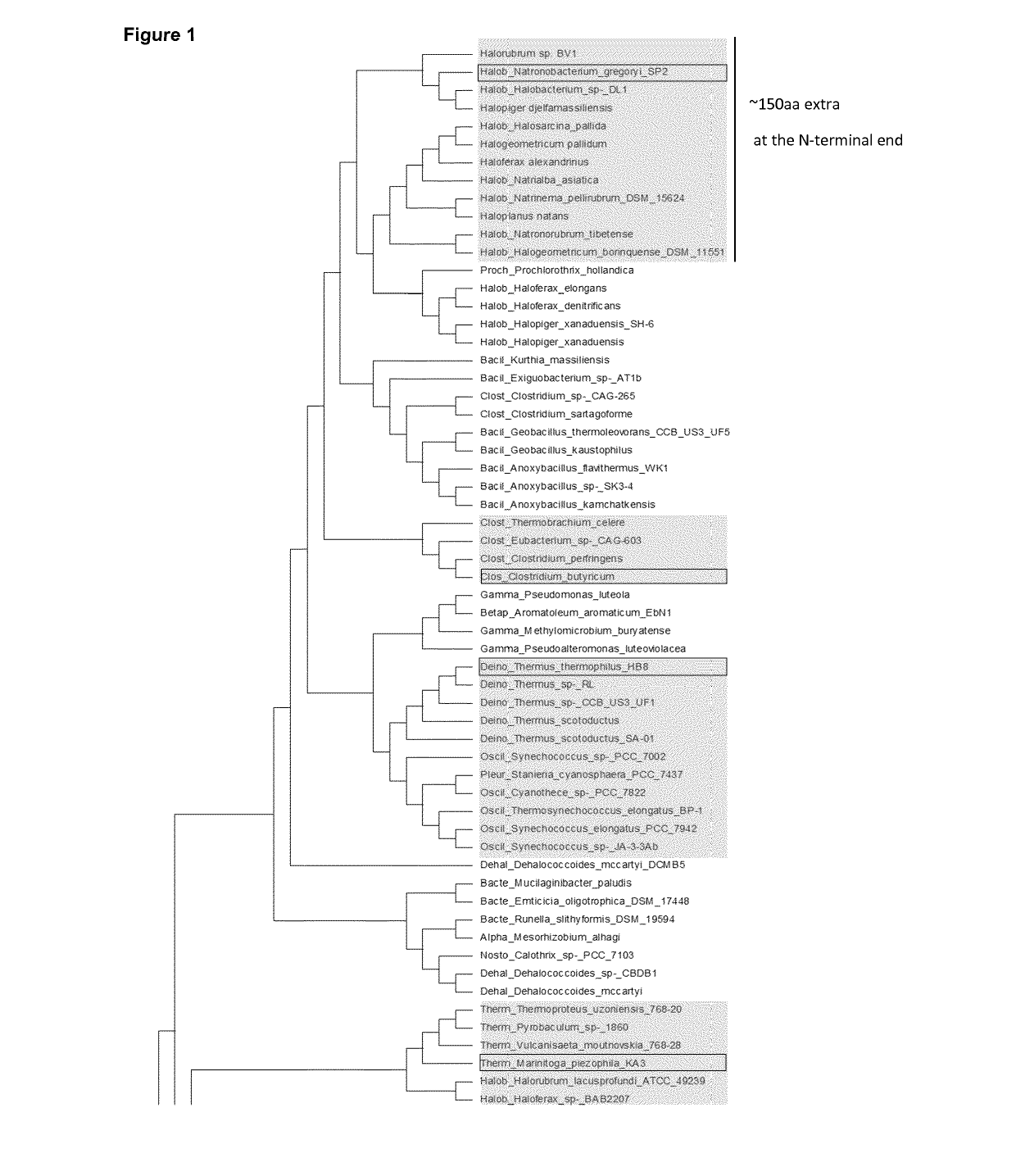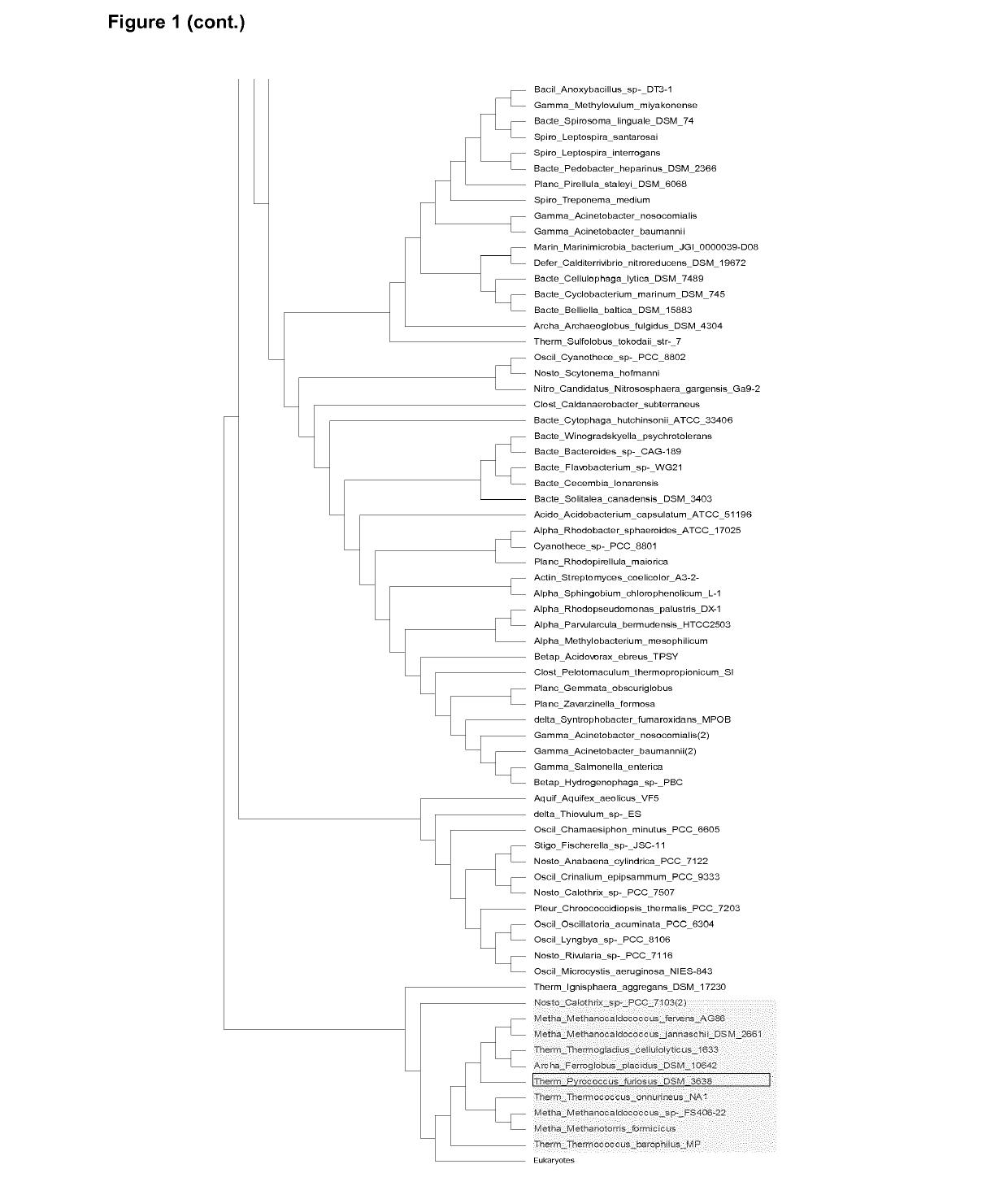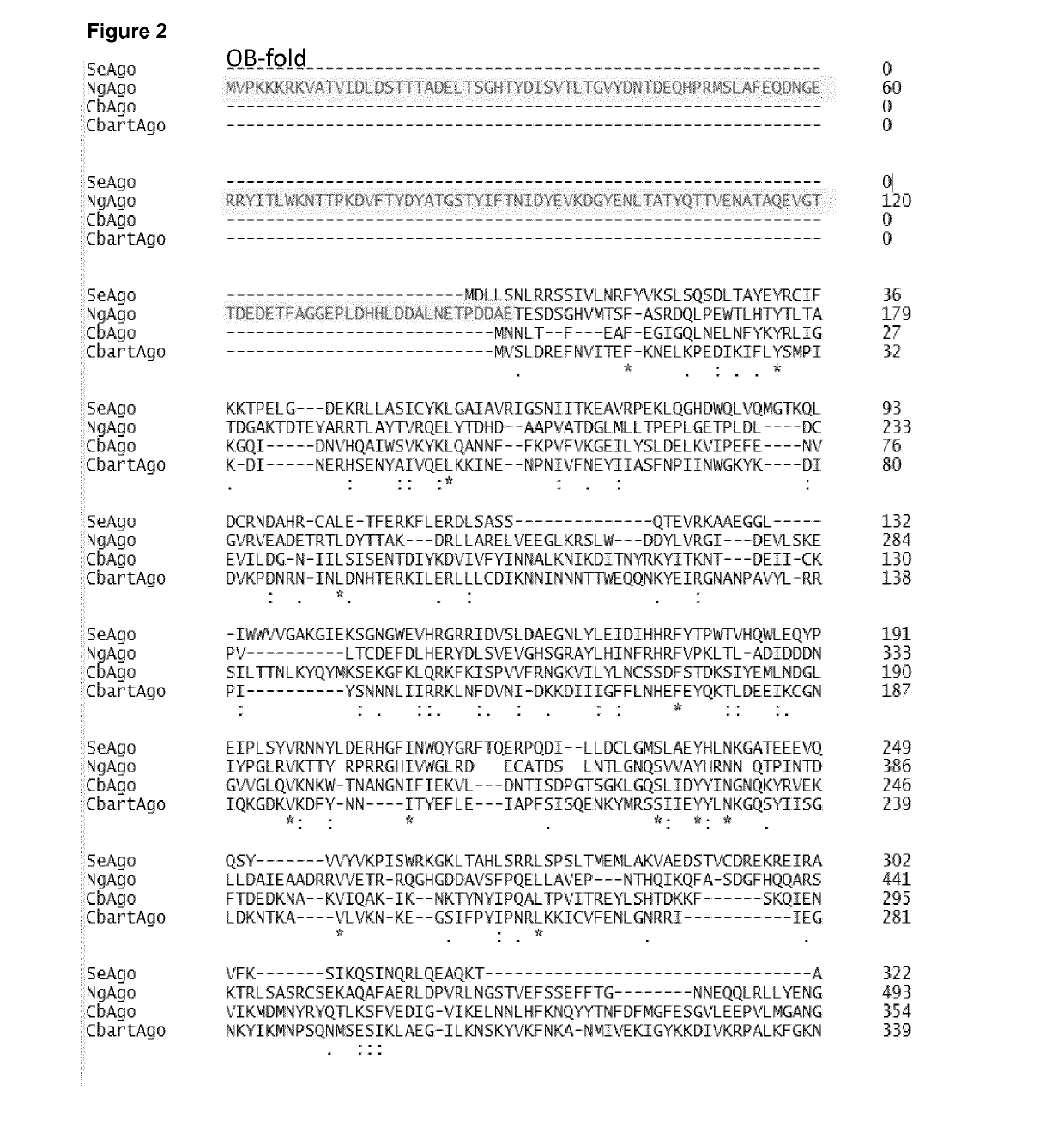Prokaryotic Argonaute Proteins and Uses Thereof
a technology of prokaryotic argonaute and pago, which is applied in the field of prokaryotic argonaute (pago) proteins, can solve the problems of limiting the potential utility of these enzymes, unable to direct cleavage of ssdna or ssrna targets, and unable to bind pfago proteins with ssrna guides, etc., and achieves highly reliable gene editing and effective “locking
- Summary
- Abstract
- Description
- Claims
- Application Information
AI Technical Summary
Benefits of technology
Problems solved by technology
Method used
Image
Examples
example 1
struct Generation, Expression and Purification
[0166]CbAgo was predicted to be a full length Argonaute containing all four domains (FIG. 3A; in SEQ ID NO: 1 DEDX domain residues are italic type and boldface). CbAgo was codon harmonized for E. coli K12 and heterologously expressed and purified in E. coli.
MBP-CbAgo Construct Generation
[0167]pML1-M CbAgo plasmids were generated using Ligation independent cloning (LIC) (FIG. 3B).
[0168]Backbone was prepared by mixing pmL 1B (5 μg) or pmL 1M (5 μg), cutsmart buffer (5 μL), SspI (3 μL), MQ water (10 μL) in a reaction volume of 50 μL. The plasmid was cleaned from impurities using a clean and concentrate kit. T4 DNA polymerase and dGTP was used to check back and create sticky / overhangs. This was done by mixing pmL 1B (600 ng) or pmL 1M (600 ng), buffer (3 μL), dGTP (3 μL), 100 mM DTT (1.5 μL) T4 polymerase (0.6 μL) and MQ water (14.7 μL in pmL 1B reaction or 11.4 μL in pmL 1M reaction). A codon optimized CbAgo (SEQ ID NO: 9) insert was gener...
example 2
aves DNA Targets Using 5′-Phosphorylated DNA Guides and Binds Target RNA / DNA with RNA / DNA Guides
[0172]To assess which combinations of RNA / DNA guides and RNA / DNA targets CbAgo was able to cleave, an activity assay was performed with all possible combinations. A molar ratio of 5:1:1 was used for CbAgo:guide:target, which was previously found to yield optimal product formation for PfAgo (Swarts et al., (2015) ibid.). All guides and targets used in this study contain a 5′-phosphate (Table 2; FIG. 4).
TABLE 2Overview of all guide / target combinations used. All have a 5′-P group.SEQ IDNumberNO:Sequence (5′→ 3′)Comment34669TGAGGTAGTAGGTTGTATAGT 21 nt Guide;Target ispWUR704401710TTATACAACCTACTACCTCGT 21 ntGuide;Target ispWUR704702411UGAGGUAGUAGGUUGUAUAGU 21 nt Guide;target ispWUR704705212UUAUACAACCUACUACCUCGU 21 nt Guide;target ispWUR704702213AAACGACGGCCAGUGCCAAGCUUACUAUACAACCUACUACCUCAU 45 nt RNATarget;guide is3466702314AAACGACGGCCAGTGCCAAGCTTACTATACAACCTACTACCTCAT 45 nt DNAtargetGuide is346...
example 3
aves DNA Targets at a Mesophilic Range of Temperatures
[0177]The next activity assays focused on finding the temperature range in which CbAgo exhibits DNA-guided DNA cleavage after one hour (FIG. 7A). CbAgo was observed to be active at a temperature range between at least 10 and 44° C., since 34nt product bands can be observed (FIGS. 7A and 7B). Temperatures of 32° C., 37° C. and 44° C. not only show more degradation of the target bands than lower temperatures, but also showed dim 11 nt product bands. This suggests that CbAgo has more activity in the higher mesophilic temperature spectrum. Control lanes show no product formation for any guide / target combination without adding CbAgo.
[0178]In order to determine a temperature limit up to which CbAgo is active, a wider range of temperatures were tested (FIG. 7B). Guides were incubated for 15 minutes at the reaction temperature before adding the target to ensure CbAgo-guide complex formation. This method excludes the possibility of residu...
PUM
| Property | Measurement | Unit |
|---|---|---|
| temperature | aaaaa | aaaaa |
| temperature | aaaaa | aaaaa |
| temperature | aaaaa | aaaaa |
Abstract
Description
Claims
Application Information
 Login to View More
Login to View More - R&D
- Intellectual Property
- Life Sciences
- Materials
- Tech Scout
- Unparalleled Data Quality
- Higher Quality Content
- 60% Fewer Hallucinations
Browse by: Latest US Patents, China's latest patents, Technical Efficacy Thesaurus, Application Domain, Technology Topic, Popular Technical Reports.
© 2025 PatSnap. All rights reserved.Legal|Privacy policy|Modern Slavery Act Transparency Statement|Sitemap|About US| Contact US: help@patsnap.com



